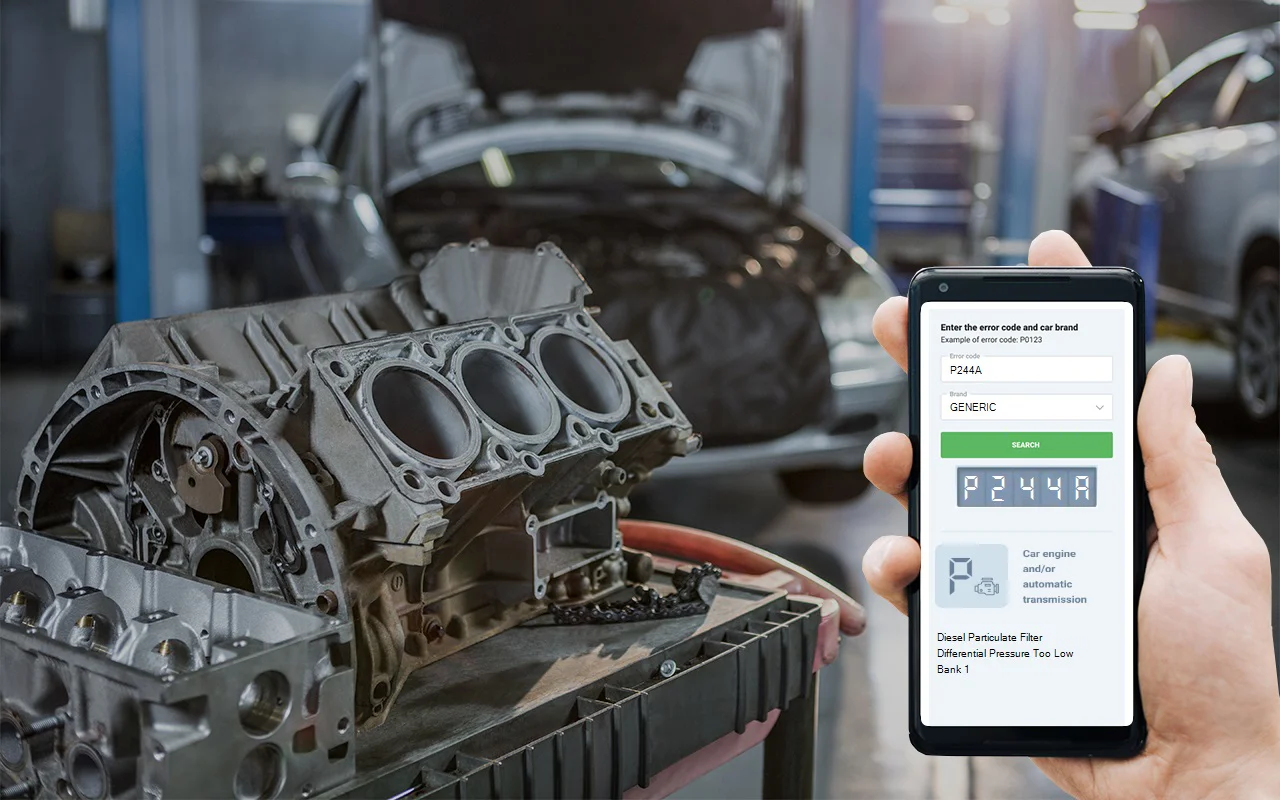When you see a p244a code pop up, it’s your vehicle’s computer letting you know something isn’t right with the pressure readings across the Diesel Particulate Filter (DPF). Let me put it in everyday terms: the system monitors how much exhaust pressure builds up before and after the DPF-that’s the filter responsible for catching soot and keeping your emissions in check. If the difference in pressure is less than what the system expects, that’s a red flag that something’s off. From what I’ve seen, this usually points to issues with the sensor hoses, the filter itself, or, in some cases, signs that someone’s tampered with or outright removed the DPF. The system’s smart enough to catch things like disconnected or blocked hoses, a sensor that’s packed with soot, or a missing filter-all of which can throw your emissions system for a loop.
DTC P244A
Main Causes of P244A
From my time at the workbench and what the service manuals say, these are the main culprits behind a p244a:
- A DPF pressure sensor hose that’s slipped off or come completely loose.
- Hoses or pipes that have built up with soot or debris, blocking the flow.
- A DPF pressure sensor that’s kicked the bucket or is giving bad readings.
- A Diesel Particulate Filter that’s been tampered with or removed-yep, it happens more than you’d think.
- Some sort of restriction or blockage in the exhaust, either before or after the DPF itself.
Most times, you’re dealing with a hose or sensor issue, but I can’t count how many times I’ve uncovered a DPF that’s been bypassed. That’ll trigger this code every time.
Common Symptoms When You Have a P244A Code
When this code’s active, the first thing you’ll likely notice is the check engine light staring back at you. Depending on your make and model, you might also get a specific warning about the emissions system or a DPF alert. Some vehicles will even throw themselves into limp mode to protect the engine, which means you’ll feel a real drop in power or sluggish throttle response. But here’s the kicker: sometimes, the only sign is that annoying light on your dash-everything else feels normal until you look closer.

How to Diagnose dtc P244A
Here’s the step-by-step I follow whenever I’m chasing down a dtc p244a:
- I always start by popping the hood and giving the DPF pressure sensor hoses a good look. Are they cracked, loose, or hanging off? I can’t tell you how many times a barely connected hose is the whole problem.
- Next, I pull the hoses off (engine cold, of course!) and check for blockages. Sometimes I’ll blow through them myself, other times I’ll use compressed air. If you can’t get air through, you’ve found your culprit.
- After that, I scan the DPF itself for signs of tampering or removal. If somebody’s pulled the filter or cut it out, that’s a guaranteed p244a.
- If everything looks legit so far, I’ll plug in a scan tool and watch the DPF pressure sensor readings. If they’re frozen or make no sense, odds are the sensor’s bad.
- Last but not least, I check for exhaust leaks or damage around the DPF. Even a small leak can throw off the readings and make life miserable for the pressure sensor.
Pro tip: Always start with the easy stuff like hoses and connections before you dive into swapping out expensive sensors or filters.

Mistakes to Avoid With the P244A Engine Code
A classic mistake I see is folks rushing to replace the DPF pressure sensor without even glancing at the hoses. That’s tossing money down the drain. Another thing that gets missed is a hose with just a tiny split or a loose fit-those minor issues can cause major headaches. And let’s not forget, sometimes the DPF’s been tampered with or removed and nobody checks for that. My advice: always nail the basics before you start swapping out parts.

How Serious Is obd2 code P244A
Honestly, this isn’t something you want to brush off. If the DPF system isn’t working like it should, your emissions shoot up, and you run the real risk of your engine slipping into limp mode-leaving you crawling home or stranded. Letting this go too long can lead to clogged filters, fried sensors, or even bigger engine problems from all that extra backpressure. Trust me, if you count on your ride every day, you don’t want to ignore this one.
Repair Steps for a P244A Trouble Code
Here’s my go-to fix-it list when I run into a p244a:
- Make sure every DPF pressure sensor hose is secure-replace any that are cracked or falling apart.
- Clear out any gunk or blockages from the hoses or sensor pipes-sometimes a bit of soot is all it takes to mess things up.
- If the pressure sensor isn’t reading right, swap it out for a new one.
- If you find the DPF’s missing or been tampered with, it’s got to go back in or be replaced correctly.
- Patch up any exhaust leaks or fix damage near the DPF system.
Once repairs are wrapped up, I always clear the code and take the car for a test drive to make sure everything’s running smooth again.
Conclusion
Bottom line: if you’re seeing a P244A, your vehicle’s not getting the right pressure reading across the DPF. Nine times out of ten, it’s a hose problem, blockage, faulty sensor, or a missing filter. Don’t drag your feet-jumping on this early can spare you from way bigger and pricier repairs later. Start by inspecting hoses and the sensor, then move on to the filter if you need to. That’s the approach I trust to get your engine back in shape and keep you out on the road where you belong.




